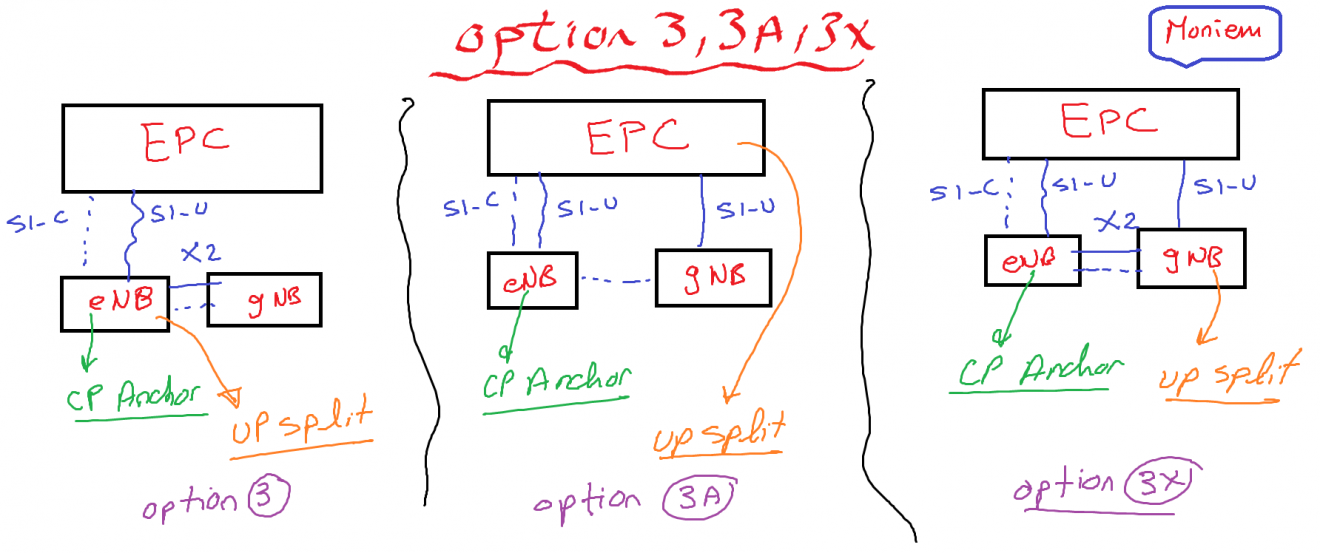When you are reading 3GPP TS 37.340 for 5G NR Release 15, you’ll find on Page 7, section 4 the definition of “Multi-RAT Dual Connectivity” or MR-DC and the definition is not new as it’s already mentioned before on 3GPP Release 14 TS 36.300.
The main idea of Dual Connectivity or DC, in general, is when multiple Receiver/Transmitter may be configured to utilize resources provides by two different nodes connected via non-ideal backhaul like X2-Interface. One node acts as the MN or Master Node and the other as the SN or Secondary Node.
For MC-DC, there are two types as below:
- MR-DC with the EPC, The MR DC mechanism is called E UTRA NR dual connectivity (EN DC).
- MR-DC with the 5GC.
Option 3/3a/3x
As the early deployment architecture of 5G, NSA focuses on the eMBB scenario, reusing the current EPC and LTE as the anchor, which enables the quick introduction of 5G NR. Most operators choose NSA as the early deployment of 5G.
The EN-DC architecture is suitable for deployment scenarios that only introduce 5G NR and do not introduce 5GC. In this architecture, the anchors of the control plane are always located in the LTE RAN, that is, the S1 C interface is terminated by eNB.
It can be further divided into three types of networking architecture in the sight of different user plane aggregation point and distribution flow types, as shown below:

CP Anchor: Control Plane Anchor
- Signaling Anchor or Control Plane Anchor.
- All user connection management and radio link control for combined 4G/5G nodes is always managed by the LTE part.
- S1-C interface is always terminated by the LTE part.
| Option 3 | Option 3a | Option 3X |
| No S1-U to gNB | gNB has an S1-U interface to EPC | The traffic is converged at the gNB PDCP layer |
| High Traffic will be terminated at eNB | Traffic flows are split into the core network | The traffic is divided from gNB to eNB via X2-interface |
| eNB needs to be upgraded to avoid becoming Bottleneck! | Difference service bearers can be carried in 4G or 5G | gNB carry on most of the traffic and avoids excessive LTE upgrades |
| The backhaul to the core network and between the two nodes also need to be improved. |
No direct interface between eNB & gNB as there’s no split mechanism, So Backhaul here is easy. | Avoid impact to legacy LTE for UP data split |
The operators can choose the appropriate architecture according to the existing network situation and evaluation of network transformation and upgrading cost.
My Opinion that Option 3 offers limited data peak rate and necessary LTE expansion for User Plane data split, Option 3a is not common due to the mobility issue between 5G covered and non-covered areas and finally, Option 3X is the next option so far as it provides dynamic user plane split in RAN at the packet level and provides better performance.
